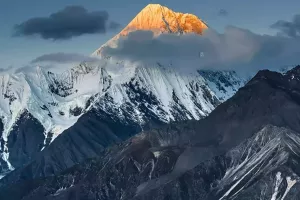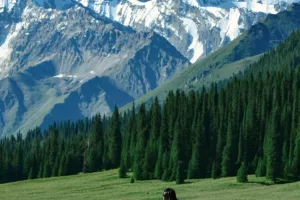Every year from April to July, when spring and summer alternate, the coastal areas often appear foggy. At this time, the blue sea and blue sky were shrouded in white mist, like a fairyland on earth. This is known as sea fog. In general, sea fog can be divided into advection fog, mixed fog, radiation fog, and terrain fog. Different types of sea fog have slightly different causes and characteristics.
Formation of sea fog
Sea fog is actually small droplets of water suspended in the air above the sea surface. When the water vapor in the lower atmosphere at the sea surface increases and the temperature decreases, the atmosphere will gradually reach saturation or supersaturation. At this time, a large amount of water vapor in the air will condense into small suspended water droplets. As the number of water droplets continues to increase, the sky will gradually appear grayish white. At this time, the visibility on the sea surface decreases, forming sea fog.
Sea fog can hang over the sea for a long time, what's the matter? This is because the water droplets that make up sea fog are about 10 microns in diameter. Such droplets are small and light, falling about 1 cm per minute, making it appear as if they are still in mid-air.
1. Advection fog
Advection fog is the fog generated on the sea surface due to air advection, including advective cooling fog and advective evaporative fog. Advection cooling fog, also known as "warm advection fog", is a fog formed by condensation of water vapor when the warm air passes over the sea surface. The fog is thick, large in scope, and lasts for a long time; As the name suggests, it is fog formed by the evaporation of seawater. The fog area is large, but the fog layer is thin.
2. Hybrid fog
Mixed fog includes cool season mixed fog and warm season mixed fog. Both types of fog form for similar reasons: Sea storms often bring airborne water droplets to the surface of the sea, gradually saturating the air with water vapor. This air combines with cold air from high latitudes to form cool-season mixed fog, and combines with warm air from low latitudes to form warm-season mixed fog.
3. Radiation fog
Radiation fog can be divided into floating film radiation fog, salt layer radiation fog, and ice surface radiation fog. Floating film radiation fog is produced by oily dirt or suspended solids floating on the sea surface. These suspensions form a thin film, and radiative cooling causes water vapor near the thin film to form a fog at dawn on a clear day. After the spray droplets evaporate, they leave fine salt particles in the air, forming an airborne salt layer. At night, the radiative cooling of the salt layer causes nearby water vapor to form a salt layer radiation fog. Ice surface radiation fog is the fog formed by the radiative cooling of sea ice and icebergs.
4. Terrain fog
Terrain fog is fog formed due to topographical reasons, and is divided into island fog formed when air climbs along the island and shore fog commonly found near the coast. Shore fog is an interesting fog that moves back and forth between sea and land with land and sea breezes. This fog is often seen on the east coast of Canada and the west coast of the United States.


